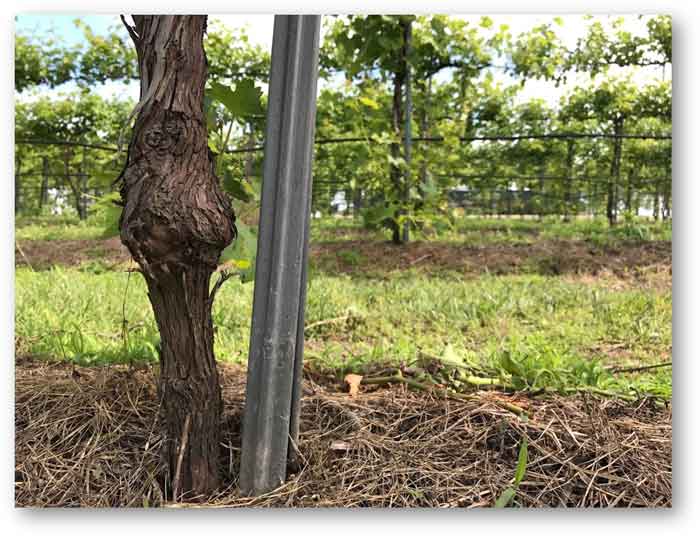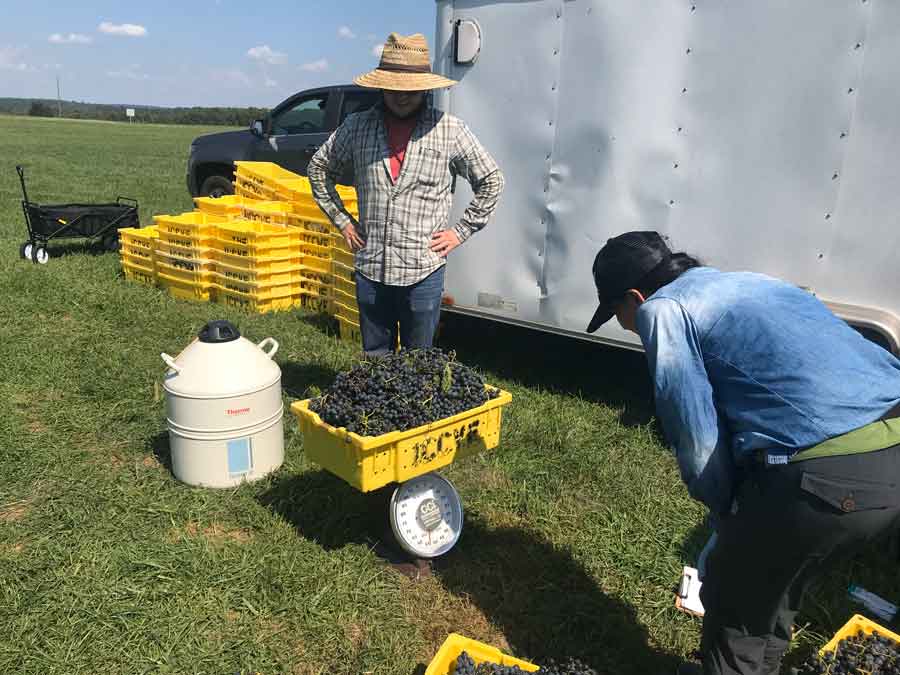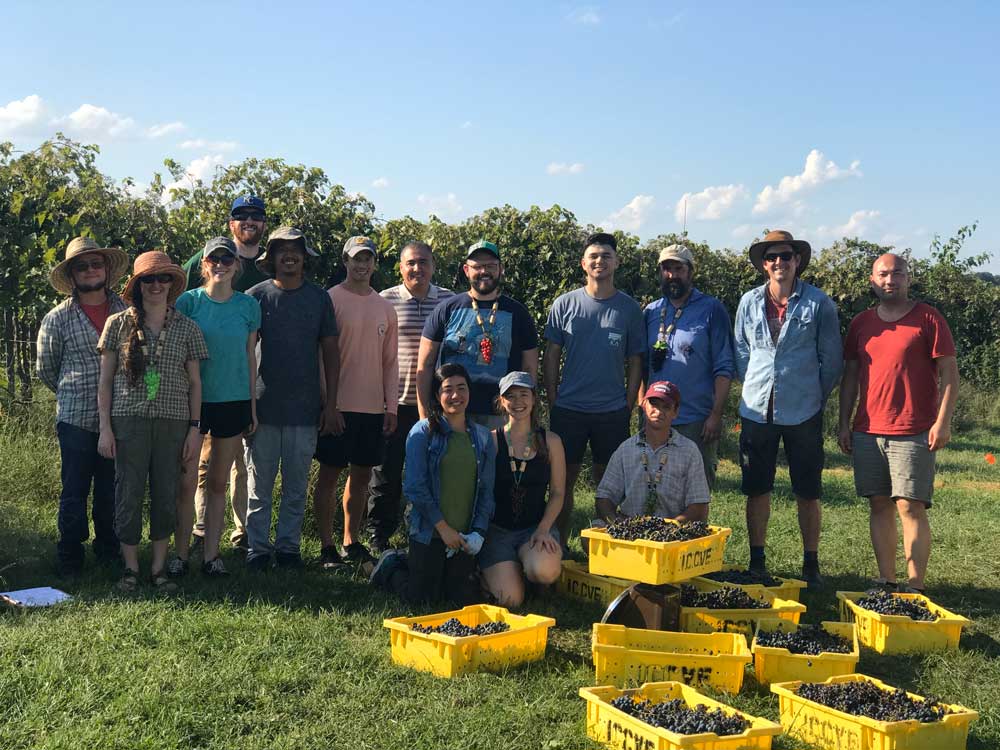Fruit of the Vine
How Grapevine Grafting Can Help Us Prepare for a Changing Climate
Grafting is the joining of the root of one plant variety (the “rootstock”) to the shoot of another (the “scion”). It’s an ancient agricultural technique dating back several thousand years and is important in perennial agriculture for many reasons. Mature root stocks can help jumpstart juvenile shoots and help defend against pests and pathogens in the soil. Desirable characteristics like dwarf size, pest and disease resistance can all be imparted to the shoot thanks to the hardier root below. But the effects of grafting are still poorly understood.

A grafted grape vine. Grafting typically joins two plant organs from different individuals: the shoot stem above (“scion”) from one variety with the rootstock below from another. It is an ancient technique, but poorly understood.
Allison Miller, PhD, Danforth Center principal investigator and professor of biology at Saint Louis University, wants to understand grafting better. The work of the Miller lab is motivated by a fundamental challenge facing society: how can we feed a growing population in a changing climate in a sustainable way? One component of the solution likely involves perennial crops. And many perennial crops are grafted. Grapevines are one such grafted perennial crop.
“Grafting is used in more than 70 different woody perennial crops,” says Miller. “In a changing climate, grafting takes on additional importance as a means of potentially mitigating impacts. Grafting makes it possible to select for features that optimize plant success both above- and below-ground.”
In fact, the modern wine industry owes its existence to grafting. In the mid-1800s, French vineyards were invaded by a new pest: phylloxera. Native to North America, the aphid attacks grapevine roots and European grapes had no resistance. The pest spread from France throughout Europe, and ultimately more than 60 percent of European vineyards were destroyed. The eventual solution was to graft the shoots of susceptible European varietals onto aphid-resistant grapevine species from North America used as rootstocks.

Researchers weigh the grapes in the field prior to processing.
The Project
Dr. Miller is the co-principal investigator in a multiyear, multi-institution project investigating the relationship between rootstock, scion, and environment in grafted grapevines. She is joined by colleagues from the University of Missouri; Missouri, Michigan, Ohio, Penn, and South Dakota state universities; and the U.S. Department of Agriculture. The team’s goal? To better understand the “transmissible effects” of rootstocks in grapevines. This understanding has important applications for sustainable crop management.
“Grafting was used initially in grapevines to deal with a soil pest and avoid it,” says Miller. “But now we are not just looking at what the rootstock does below ground, but how it might be used to enhance the scion in other ways.”

Perennial crops allow us to harness the power of plants to nourish humanity and heal the planet at the same time. With this study, we hope to speed the development of enhanced perennial crops with the characteristics needed to thrive in a changing climate
Allison Miller, PhD, Danforth Center principal investigator
Why It Matters
Perennial crops offer many potential benefits to the environment, such as reduced tilling and increased season-over-season harvests. Perennials create deep root systems, which sequester carbon, reduce water needs, and help restore soil health. They are food crops that also replenish the Earth. As agriculture shifts to embrace more perennial crops, a better understanding of grafting will allow for perennial crop improvement and adaptability. The long-term goal is a kind of personalized medicine for perennials, providing custom rootstock-scion pairings to maximize vigor and harvest in particular climates.

Danforth Center Principal Investigator Allison Miller, PhD, is leading a multi-institutional project to better understand the effects of grafting on grapevines. Seen here are researchers from the Miller lab, MIZZOU, and Missouri State University during the 2018 harvest at the University of Missouri Southwest Research Farm in Mount Vernon, MO.
The Need
This research is funded by the National Science Foundation Plant Genome Research Program, the Missouri Grape and Wine Institute, and donors to the Impact Fund. Interested in supporting projects like this? Visit danforthcenter.org/give.
About
A version of this story originally appeared in the Leaflet, the free newsletter of the Donald Danforth Plant Science Center. Sign up to receive more stories like this straight to your inbox.